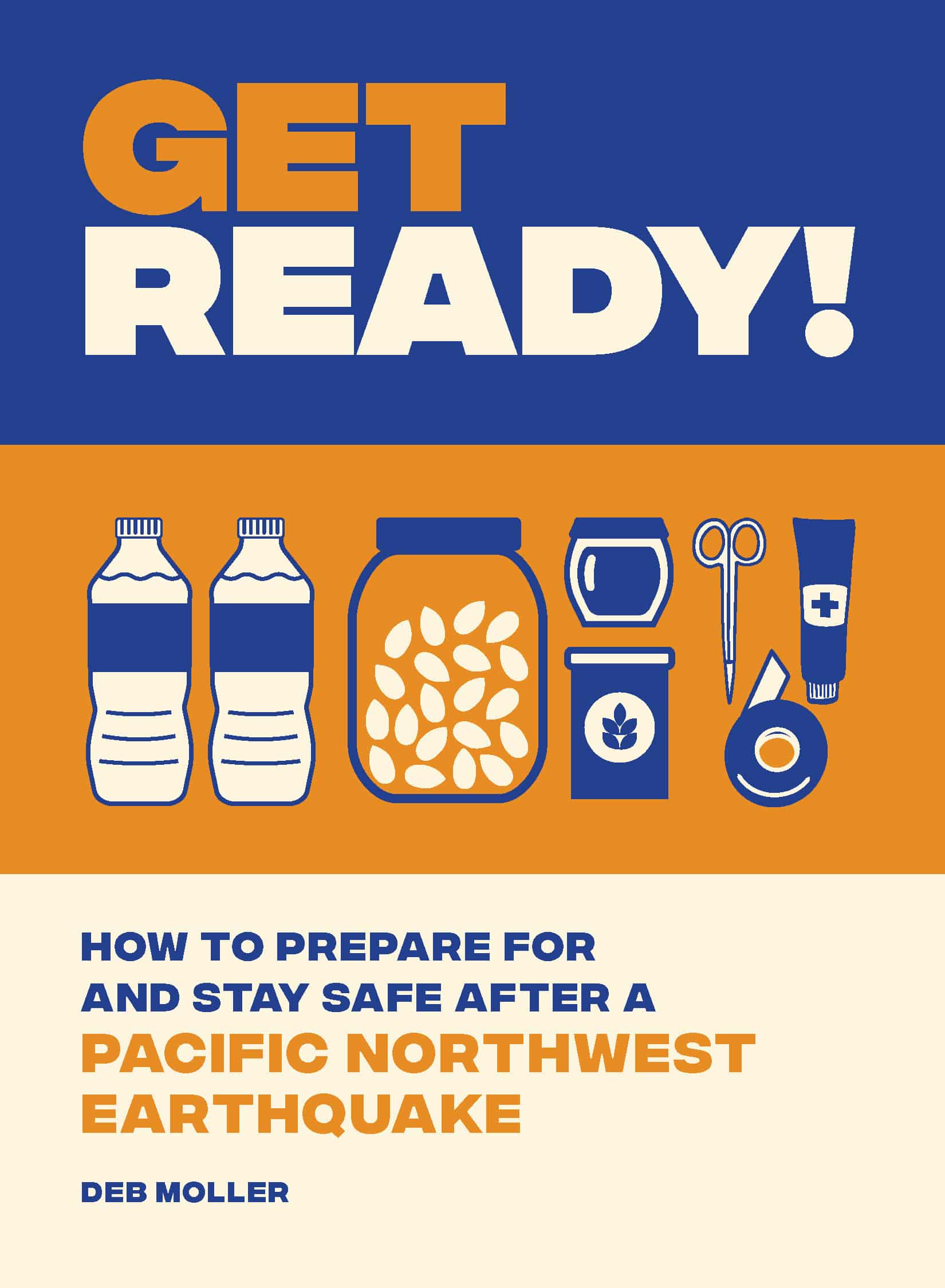How to Prepare for and Stay Safe after a Pacific Northwest Earthquake: Get Ready!
16.00 JOD
Please allow 2 – 5 weeks for delivery of this item
Add to Gift RegistryDescription
The definitive guide to getting ready for and staying safe after a major earthquake in the Pacific Northwest. FEMA recommends being prepared for two weeks of self-sufficiency after it occurs, and this handbook will show you how with clear, informative, and easy-to-implement steps.Recent seismic activity has made national headlines and underscored the fact that the Cascadia fault line off the coast of British Columbia, Washington, Oregon, and Northern California is overdue for a major earthquake. And when it happens, living conditions could be akin to those in the mid-nineteenth century. This handbook covers the supplies you need to stay safely in place, including water, food (and food prep), first aid, sanitation, health and hygiene needs, shelter and bedding, and light/fire. It also includes lists of what to purchase and how to store it, as well as simple excercises to gain confidence in perfoming necessary tasks. Learn what to do during and immediately after an earthquake, how to develop a reunification plan, and how to communicate when basic infrastructure is down. It also addresses the particular concerns of those living in coastal areas (the tsunami zone) as well as those outside of the severe impact zone. It covers long-term ways to stay safe without modern conveniences and a crash course in survival techniques should the quake happen before all preparations are complete. Get Ready! presents information in clear, practical, and managable steps, equipping the reader with the skills to care for themselves and their loved ones should a major earthquake hit. And when it does, the internet will not be an option, making this reference handbook invaluable. If you live in the Pacific Northwest, you need Get Ready!
Additional information
| Weight | 0.23 kg |
|---|---|
| Dimensions | 1.15 × 14.03 × 18.95 cm |
| PubliCanadation City/Country | USA |
| Author(s) | |
| Format | |
| Language | |
| Pages | 208 |
| Publisher | |
| Year Published | 2021-1-12 |
| Imprint | |
| ISBN 10 | 1632173042 |
| About The Author | Deb Moller is the former public-private partnerships manager at the Oregon Department of Emergency Management. She is a Senior Fellow at the Center of Excellence for Homeland Security and Emergency Management, under the Washington State Board of Community and Technical Colleges. She is a member of the Oregon Emergency Management Association and the Capital Area Emergency Management Committee. Deb is the founder of Cascadia Calling, an organization dedicated to earthquake preparedness in the region. She holds a master’s degree in applied behavioral science from Bastyr University. |
| Excerpt From Book | My 1949 Cape Cod–style house, with its dark shutters andtrimmed shrubs, blends in well: a small house on a quiet street inthe slow-paced capital city of Salem, Oregon. Unless, of course,you go snooping under the sofa, where cans of water—carefullyplaced on their sides in foil trays—hide.My hallways look ordinary, but open the linen closet andonly one shelf holds sheets. The other three stock canned goods:hearty soups, baked beans, tuna, beef stew. Pull out the drawersbelow to reveal N95 masks, six bottles of hand sanitizer, batteriesof all sizes, two first-aid manuals for backcountry hikers, extralargebottles of various pain pills, and packages of heavy-dutycontractor garbage bags for lining buckets improvised into toilets.Elsewhere in the house, shelves, cupboards, boxes, and bins arefilled with freeze-dried food, first-aid supplies, charcoal briquets,and a camp stove.What you’ve found are not the dark secrets of a paranoiddoomsday fearer or the stockpile of an agoraphobic homebody,but the preparations of an expert who wants to be ready for thevery real threat of a 9.0 Cascadia subduction zone earthquake.The Cascadia earthquake is the “Really Big One,” the earthquakethat locals have whispered about, the one that the NewYorker freaked out the whole region about, the one that inspiredthis book. If the full 620-mile-long fault unlocks, we’ll see whatscientists call a “full-rip” event (see page 4 for what this means),causing severe shaking from west of I-5 to the coast and farthereast in some areas. When the shaking starts, we’ll be living inthe twenty-first century; when it stops, we’ll be living in the1850s: no power, water, plumbing, phones, or internet. Few basicpublic services and limited medical assistance. But our ancestorssurvived back then, and we can too—if we’re prepared.Emergency officials estimate that getting help to everyonewill take two weeks or more. That’s why I am “two-weeksready”—I’m able to meet the needs of my family for fourteendays without outside help. That’s why you should be too.Preparation is hard to weave into modern life. Like so manybefore me, I failed time and again to put aside the hours to makethe perfect emergency kit, to remember to rotate my food on theperfect schedule, and to make new plans every time anyone inthe family changed jobs or schools.I could tell you that getting ready for a catastrophic earthquakeis easy, a “just do it” proposition. I could tell you that thetips and tricks I’ve included here will help you avoid every obstaclealong the way. I’d love to say I have a magic wand that can getyou ready to survive for two weeks in a snap. It would feel goodto tell you that. But it wouldn’t be true.There isn’t a convenient empty space in your budget, yourschedule, or your house just waiting to be filled with “gettingready.” You’ll have to find time, money, and space in a life whereall those things are probably already 100 percent (or more) spokenfor. I can help you with creative solutions to maximize your time,money, and storage space, but it would be silly to say that addingone more thing to an already busy life is easy. It won’t be.Instead, you’ll have to consider why it is important to you toprepare, why being prepared is more important than whateverelse is competing for your time, money, or space. Everyone’sanswer will be different.I’ve only been involved professionally in emergency managementsince 2016, when I became the public-private partnershipsmanager at the Oregon Office of Emergency Management.When I left that job, I started a community-based earthquakepreparedness organization called Cascadia Calling, to help peopleoutside the tsunami zone get ready for a 9.0 earthquake. Butmy decades working in education and social service programs,coupled with my master’s degree in applied behavioral science,shape the advice in this book. Those experiences taught me thatpreparedness, like any big endeavor, is best achieved by startingsmall, doing a little on a consistent basis rather than a lot oncein a while, staying focused, expecting setbacks, having a plan,learning from mistakes, and celebrating progress.I’ve been personally dedicated to being more prepared for the“unimaginable” since 2001, after the unthinkable happened onmy birthday—September 11. It has taken me years to be reallyprepared for the Cascadia earthquake, and I’ve made tons of mistakes.I want to save others from making those same mistakes. Ineeded a book that covered not just all the “must-haves,” but wasa full guide to getting ready for a devastating natural disaster:a how-to, when-to, and where-to-store-all-these-supplies roadmap to preparedness. In writing this book, I created the bookthat I wish I’d had: how to be as prepared as possible, in a waythat fits my life—to not let perfect be the enemy of good enough.This book is designed to help a busy, distracted person—someonejust like me—get ready for the Cascadia earthquake. Withquick tasks, checklists, and useful tips, this book gives you waysto fit getting prepared into your life—in the kinds of small chunksof time you can carve out. It covers everything you need to knowto get ready to be on your own for two weeks after a full-rip 9.0Cascadia earthquake, and gives you the skills and supplies tohelp in many other types of natural disasters. It also explains justwhy this is so important: the first two chapters cover the scienceand statistics driving the recommendations. If you already knowenough about the Really Big One to want to be two-weeks-ready,you can jump right to Chapter Three (page 26) and start preparing.WHY SHOULD I GET READY?Write down the answers to the following questions and postthem in a place where you’ll see them every day. If you don’tremind yourself often of why being prepared is important toyou, you’re likely to stall in your progress before you get very far.• Who depends on you to take care of them?• What losses or suffering will you prevent by beingprepared?• What worries or fears will you ease by being ready?• What regrets will you avoid by acting now?• Why is it important to you to survive an earthquake?• Why is it important to you that you help others survivean earthquake?PREPARING FOR OTHER EARTHQUAKESThis book is about preparing for a catastrophic, full-rip 9.0Cascadia subduction zone earthquake and the aftershocks tofollow. But if you are prepared for the Really Big One, you willalso be well equipped to deal with more-localized earthquakes.Even so, what you should expect from a Cascadia subductionzone earthquake is not the same as what a different faultmight produce. For example, a large earthquake generated byeither the Seattle Fault or the Portland Hills Fault will causesevere damage to those cities, possibly even greater than a9.0 Cascadia earthquake. But because there will be minimalimpact outside the respective metropolitan areas, help willcome within hours or days after such an earthquake. The reasonfocusing on the Cascadia earthquake is so important isbecause, unlike some of the more intense earthquakes that arepossible, the 620-mile length of the fault, coupled with the 9.0magnitude of a Cascadia earthquake, will leave a massive areawithout the infrastructure for help to arrive quickly. (See pages5–6 for further discussion on intensity versus magnitude.) Youcan’t prepare for every possibility, but being two-weeks-readygives you the best chance to weather whatever seismic activitycomes your way.People in any community facing a major earthquake canadapt this preparedness advice to their situation. Those wholive in Alaska or near the San Andreas (California), New Madrid(Missouri, Illinois, Kentucky, Tennessee, and Arkansas), orWasatch (Utah) Faults are especially at risk. An earthquakeof a much lower magnitude but higher intensity can causepervasive destruction across a heavily populated area. Beingtwo-weeks-ready is prudent if your city or county is at risk forsuch an event. |
Only logged in customers who have purchased this product may leave a review.






Reviews
There are no reviews yet.